This article is the second part of my study into the player development models of the six leading nations in international hockey. Part 1 focused on the models used by Canada, the US and Sweden. An evaluation of their high-performance teams at the IIHF U-18 and U-20 World Championships over the last 10 years was provided, as well as their results at the recent 2019 Hlinka Gretzky Cup. Player development success was also measured by looking at the number of draft picks generated by each country at the NHL Draft over the last 10 years.
Now let’s look at the Russian, Finnish, and Czech Republic models and evaluate their success in developing elite prospects.
Russia’s Model
At the minor league level, Youth Hockey in Russia is club-driven. The clubs, similar to local minor hockey associations in Canada, are owned and managed by professional teams of the Russian Professional Elite League and is broadly governed by the Russian Hockey Federation. According to Dean Holden, “The primary objective of each program is to develop players for the parent-professional team.” A secondary objective is to develop players for the national teams. Winning at the older ages (16 and older) is considered but is not a primary objective. A 17-year-old is eligible to play in the top professional league.
The Russians believe the key to their player development success is the education and training of their coaches. All coaches must have a sports degree from an accredited university. This is a five-year program and is the equivalent of a Master’s degree. In addition to this general sports certification, coaches take an additional 500 hours of classes specific to hockey. Clubs have three coaches per team for 10-and-under players and two coaches per team for 11-18-year-olds. All clubs have at least one goaltender specialist.
There is an emphasis on player athleticism – off-ice physical training and physiological development are a significant part of the coaching curriculum. Dryland and strength training are key components in the development of Russian players. Players practice on-ice a minimum of five times per week with each practice session being 90 to 120 minutes long. Also, players from age 8-12 have three off-ice training sessions per week, while older players train off-ice five times per week. When players reach ages 12-14, weight training becomes part of their off-ice training program.
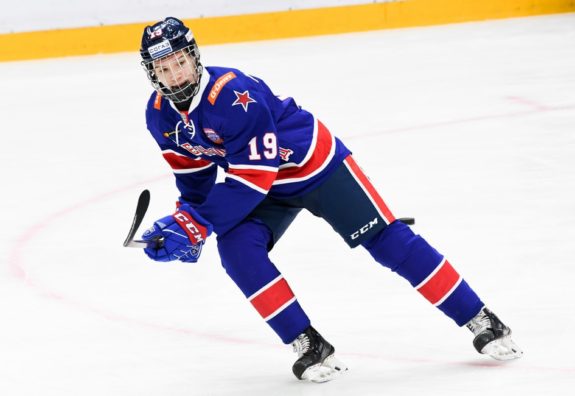
Winning is not the major criteria in a coach’s evaluation. Player skill development and progress is their priority. Ultimately Russian coaches are evaluated by the number and quality of players they develop for the high performance and national teams.
The Russians have taken a page from the United States National Team Development Program (USNTDP) model for their U-18 Team. They put their under-18 team in the MHL (Russian Junior League) which is Russia’s equivalent to Canada’s major junior league, the Canadian Hockey League (CHL). The squad competes in international tournaments together during breaks in their regular league play. It is not uncommon for the U-17 and U-18 Teams to change their team roster during the season.
Each elite club team acts as minor league affiliate of their respective professional team, either in the Kontinental Hockey League (KHL) or the Supreme Hockey League (VHL). The best U-20 (16-19-year-old) Russian amateur players are permitted to play in the KHL or VHL. They are allowed to move freely between the amateur and professional leagues because the Russian Hockey Federation believes this is important for overall player development and the success of their national teams.
The Russian U-18 Team has had limited success at the IIHF U-18 World Championships. Over the last 10 years, they have managed only three medals — one silver and two bronze medals. The encouraging part of the medal count is two of three medals have been won recently, the silver in 2019 and a bronze medal in 2017.
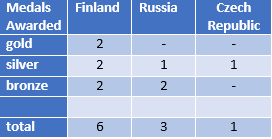
Where Russia has impressed is at the IIHF U-20 World Championships. They have won 8 medals in the last 10 years, including one gold, three silver and four bronze medals. Their only gold medal dates back to the 2011 tournament. They have been a consistent performer, medaling in seven of the last eight years.
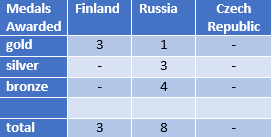
Russia won the gold medal at the 2019 Hlinka Gretzky Cup. Surprisingly, they included 11 16-year-old players on their roster of 28 players, which was the second-highest percentage of underage players used by a team in the tournament, at 39.3 percent. They only used one player that currently plays in the CHL. Russia’s commitment to player development at the Hlinka Gretzky Cup did not hurt their performance and will likely pay off in the IIHF U-18 and U-20 World Championships over the next two years.

It was an impressive year for the Russians at the 2019 NHL Draft. They had a record number of players drafted, totalling 28 picks. That is the highest number of players selected over the last 10 years and follows the previous high of 20 players chosen last year in the 2018 NHL Draft. Their highest pick was Vasily Podkolzin, drafted 10th overall by the Vancouver Canucks. He played the entire 2018-19 season in the KHL as a 17-year-old and competed for Russia in both the IIHF U-18 and U-20 World Championships.
Finland’s Model
In 2009, the Finnish Ice Hockey Association (FIHA) had reached a tipping point. They recognized they were falling behind their international hockey rivals — Canada, the US, Sweden and Russia — in their player development efforts. These countries were producing more elite players with better individual skill levels.
Their reaction was to invite the most influential hockey experts in the country to a summit staged at the Vierumaki Sports Institute. The group of Finnish hockey stakeholders included general managers, coaches, scouts, and player agents who were led by Erkka Westerlund, the Finnish National Team coach between 2004 and 2014. According to Timo Backman, the Sports Director for FIHA, “We invited everyone to the Sports Institute in Vierumaki, basically anyone who is involved with player development — to figure out how we could do things better. There was this big division between the club teams and the national team, and as a result of that symposium, we realized we needed to work together more.” (from ‘Credit New Coaching Approach as Finland Hockey Seeks Triple Gold’, – The New York Times – 5/18/16).
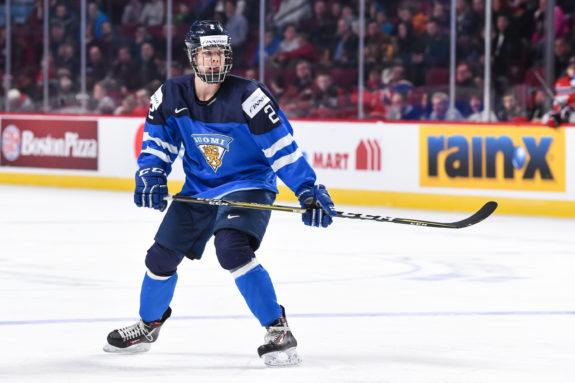
One of the most important decisions made at the Vierumaki Summit was to hire full-time coaches for the younger-player national teams. They also developed a national coaching certification program to train coaches at all levels, including goalie coaches. National team coaches were encouraged to travel around the country to meet with the elite players. According to Backman, “After a camp or a tournament, the coach goes on the road and visits each and every club that had players present. He sits down with the player and the coach of their [league] team in order to work out together how the player did, and what to work on and develop before the next tournament.” These coaches were also expected to communicate with national team members that played outside of Finland.
At the minor hockey league level, there is no position-specific play for U-10 players. All players are expected to take their turn playing goal and are supported by the fact that there are goalie coaches for every team, regardless of the age level. Cost is not a deterrent to playing goal as goalie equipment is free for all young goalies. Also, goalie coaches are provided by the FIHA to visit the various minor hockey regions to offer courses for coaches and help instruct local goaltenders.
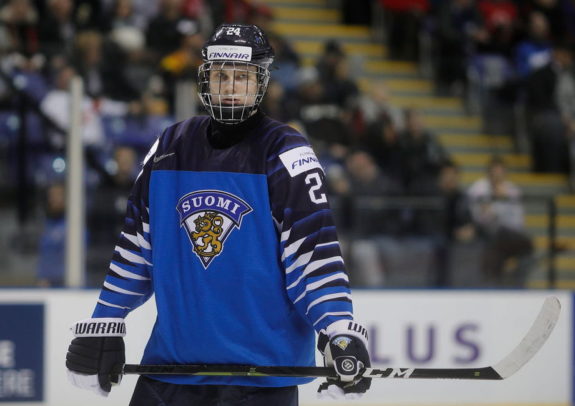
Player development in Finland received a needed financial boost from the 2012 World Championship in Helsinki. The tournament generated a profit of €8.2 million, providing much-needed support for the youth hockey development program. The FIHA used the funds to hire 25 skills coaches and 9 goalie coaches who were instructed to travel around the country and work with Finnish players between 10 and 14 years of age.
Similar to the Swedes and Russians, the FIHA encourages their best U-20 Finnish players to play in the two top professional leagues in Finland — Liiga and Mestis. Players are free to move between their elite age group team to the professional leagues.
Finland’s new player development strategy initiated in 2009 has resulted in their strong showing in the IIHF U-18 World Championships. Over the last 10 years, they have won two gold, two silver and two bronze medals. The two gold medals occurred in 2016 and 2018. While Finland’s medal count at the IIHF U-20 World Championships has not been as impressive, their total of three medals in the last 10 years have all been gold medals. They have won the U-20 Championship three of the last six years, including this year when they beat the USA in the final in Vancouver, and in 2016 when they defeated the Russians on home ice in Helsinki on a Kasperi Kapanen overtime goal.
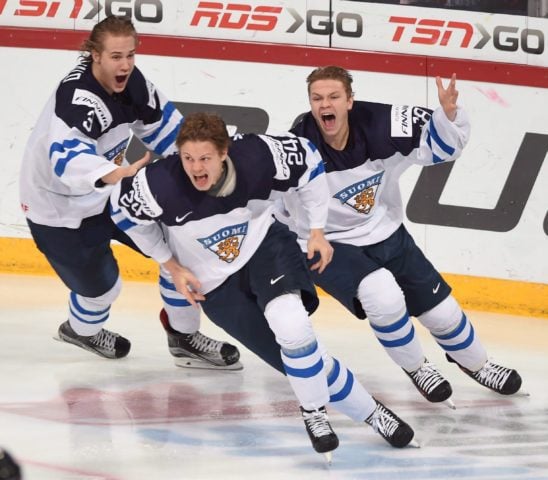
At the 2019 Hlinka Gretzky Cup, Finland finished fourth, losing to Sweden in the bronze medal game. Their roster included a total of eight underage players, including seven 16-year-old players and the only 15-year-old player in the tournament. They had four players that currently play in the CHL.
Finland’s performance at the 2019 NHL Draft was impressive. NHL teams selected 22 Finnish prospects, including second overall pick Kaapo Kakko. That total was Finland’s second-highest number of picks over the last 10 years, exceeded only by the country’s 2017 draft class of 23 picks.
Czech Republic’s Model
The Czech Ice Hockey Association (CIHA) is the national governing body of ice hockey in the Czech Republic. The CIHA has approximately 100,000 registered players, with 75,000 in the men’s category and 23,000 in the junior age bracket.
The top professional league in the country, the Czech Extraliga, was formed in 1993 after the break-up of Czechoslovakia. It was considered one of the top professional leagues in Europe at one time, however the league has suffered over the last 25 years because many of the top young prospects leave the country at an early age to play in North America, choosing to compete in either the CHL or the United States Hockey league (USHL).
Look no further than the CHL Import Draft to recognize why Czech player development at the junior-age level has suffered. Since 1992, the Czech Republic has seen 503 players drafted in the CHL Import Draft. By comparison, Russia has had 392 players, Slovakia 268, Sweden 133, and Finland 110. The CHL focused on drafting more junior-age Czech players because it was easier to convince them to report to their CHL team, given that the player development options at home were limited.

Losing young elite players, like Filip Zadina, to North American leagues is not a new issue for player development in the Czech Republic. In 2010, at a hockey summit in Vancouver held in conjunction with the Winter Olympics, Slava Lener, the director of national teams in the Czech Republic, discussed the state of Czech and Slovak hockey. He expressed concern about the fact that NHL teams were selecting fewer players from the two countries and that their results in international junior tournaments were disappointing. For example, “Lener revealed the number of players drafted out of Czech and Slovak leagues into the NHL (had) dropped to just one this past June from 22 in 2004” (from ‘Talent dries up in Czech Republic, Slovakia’, – The Globe & Mail – 08/24/2010).
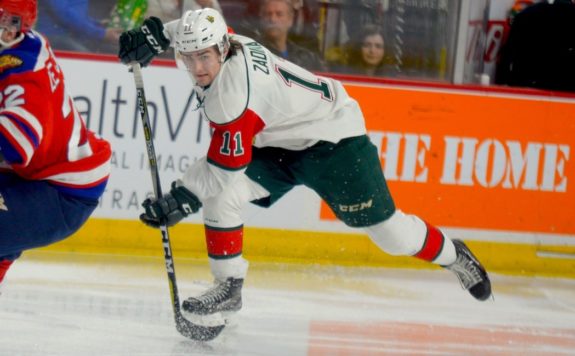
Since that summit, Lener has been working hard to improve the player development model in the Czech Republic. He has worked out an agreement with the Red Bull Hockey Academy to share training ideas and provide opportunities for young players from different countries to compete against each other. He is encouraging the best U-20 players to remain in the Czech Republic to play in the two top leagues in the Czech Republic: the Extraliga and the Czech 1.liga.
The Czech Republic has only won a single silver medal in both the IIHF U-18 and U-20 World Championships since 2010. That medal occurred in the U-18 World Championships in 2014, with the Czech team being led by Jakub Vrana who had a tournament-leading eight goals.

At the 2019 Hlinka Gretzky Cup, the Czech’s finished fifth. That could be considered an impressive performance considering 10 of their 24 players were 16-year-olds, which was the highest percentage of underage players in the tournament, at 41.7 percent. It was obvious player development, rather than wins and losses, was CIHA’s priority.
The 2019 NHL Draft saw seven Czech players selected, which is the average number of Czechs chosen in the draft over the last 10 years. Goaltender Lucas Parik was the first Czech selected in this year’s draft. He was drafted 87th overall by the Los Angeles Kings from HC Benatky nad Jizerou of the Czech 1.liga.
Russia and Finland are the clear leaders in player development among these three countries. Their commitment to training and developing coaches as professionals and placing them in the younger U-14 leagues appears to be paying off at the podium and at the draft table. Encouraging younger elite U-18 and U-20 players to play in the country’s professional leagues against older, better players is resulting in accelerated player development.
The Czech Republic is making some progress in developing their younger players but still have a lot of work to do. They need more funding from the professional leagues to train better coaches for their U-14 leagues and provide an environment that will encourage young U-20 elite players to stay in the Czech Republic to develop their game.
Player Development Model Rankings
Here are my country player development model rankings based on the existing support mechanisms they have in place to promote elite prospect development.
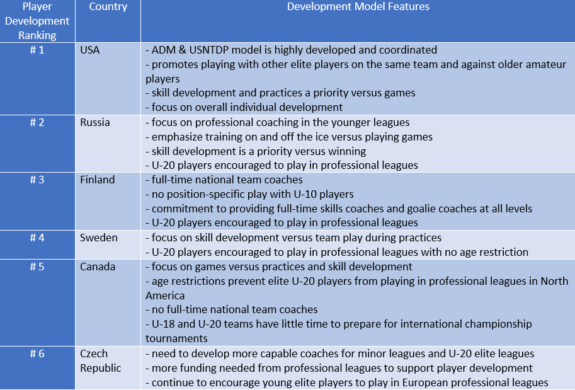
To close out the discussion on player development, I would like to point out some examples of star NHL players that made similar decisions regarding their skill development when they were 15 years old. Sidney Crosby, Jonathan Toews, and Nathan MacKinnon all chose to leave their midget teams and decided to go to Shattuck-St. Mary’s rather than play another year of midget hockey. They picked the US prep-school because they were looking for elite coaching and the opportunity to compete against older players.
Noah Dobson, the captain of the 2018-19 QMJHL and Memorial Cup Champion Rouyn-Noranda Huskies, and 12th-overall pick in the 2018 draft left home at age 15 to play and train at the Red Bull Academy in Austria. He wanted to be exposed to advanced hockey training techniques and play against older players to step up his development.
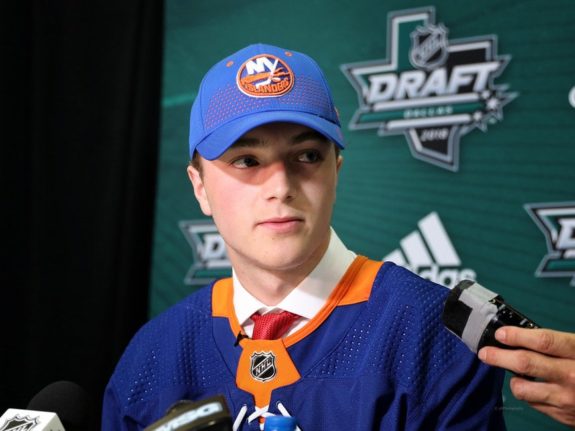
Auston Matthews played for the USNTDP U-17 and U-18 Teams and left the US when he was 18 to play professional hockey for Zurich HC in the Swiss A-League. He wanted to accelerate his development by playing against professional players in Europe; something that he was not permitted to do in North America. The next year he was the first-overall pick in the 2016 NHL Draft.
The common theme for these players and the leading international player development models is clear. U-14 players need quality coaching that emphasizes practices versus games with a focus on individual skill development. Elite U-20 players need full-time professional coaches that believe player development is more important than winning. Finally, these top prospects need to have the opportunity to compete against older amateur and professional players.